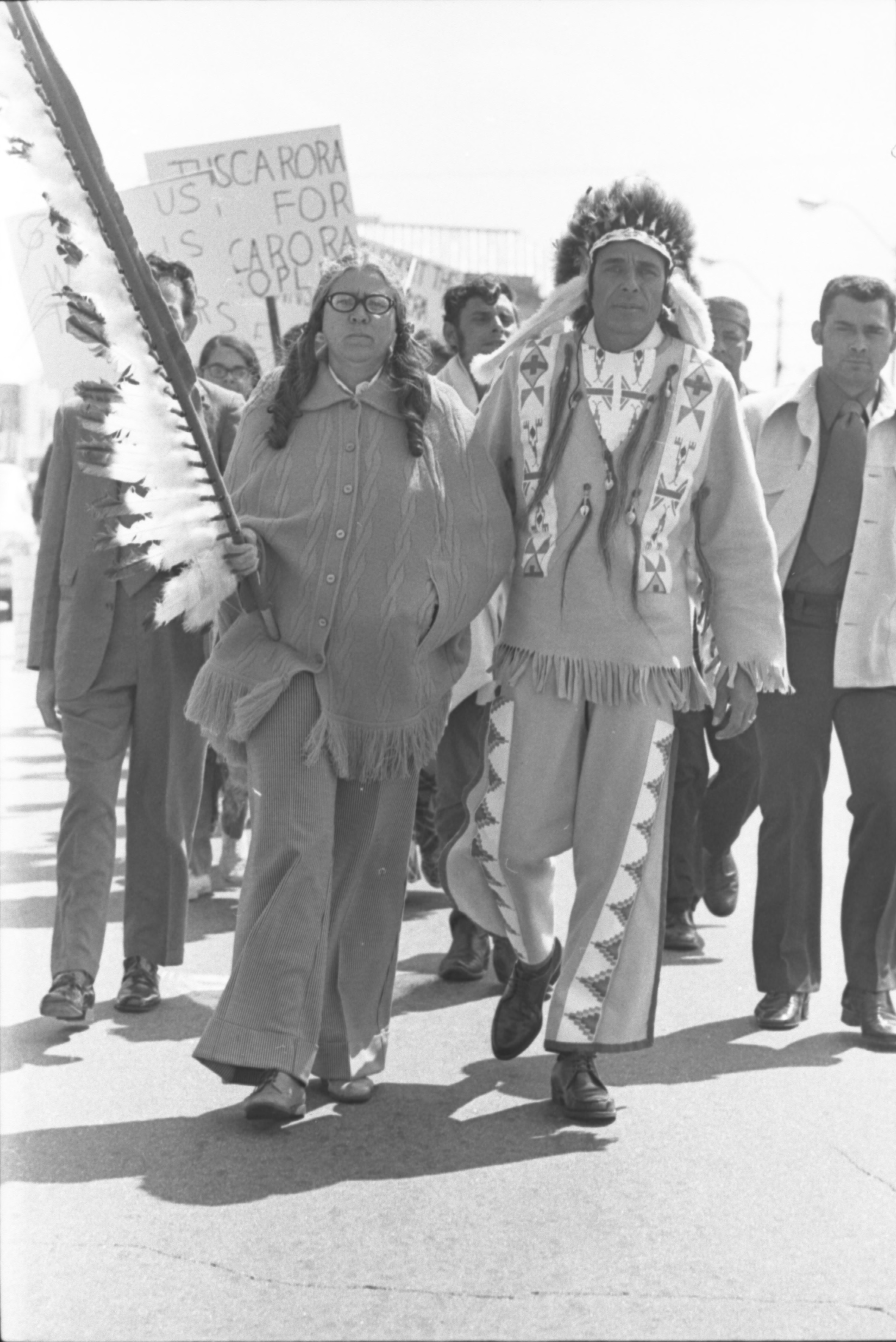
Tuscarora protestors of 1973, Ed Caram Negatives, Card box 9
Research for this post was conducted by student employees Allison Hall and Bryan Weber. Digitization of images was completed by Doss Hill and Laura Abraham.
Fifty years ago during the spring of 1973, NC State students participated in a march to the State Capitol with the Tuscarora people of Robeson County. According to the Technician, the protestors were protesting changes in Robeson County schools, lack of recognition, and the state's misidentification of Tuscarora as Lumbee. More specifically, the protestors were advocating for federal and state recognition of the autonomous bands of the Tuscarora Nation of North Carolina, the right to run their own school systems, and better job opportunities for Native American communities.
April 4-8, 1973 - The Beginning of the Protest
The protest officially began on Wednesday, April 4, 1973, with Tuscarora people from all bands of Robeson County. Protest organizer Chief Howard Brooks led the 100-mile march starting in Pembroke, North Carolina, and moving to the State Capitol in Raleigh. In the Raleigh News and Observer, Brooks commented that the goal of the march was to convince Governor Jim Holshouser to reconvene the North Carolina Commission of Indian Affairs to hear demands from the group. Before the march began, Chief Brooks stated, “This march marks a critical milestone in the struggle of my people. The question is not just whether we’ll be free – it’s whether we are going to be at all” (Raleigh News and Observer, April 4, 1973). Chief Brooks further stated, “Our people are suffering because of the white power structure and it’s time this human punishment ended. We’ve come to demand and to receive.” After marching for several days and camping during the night, protestors arrived in Raleigh on April 8, 1973.
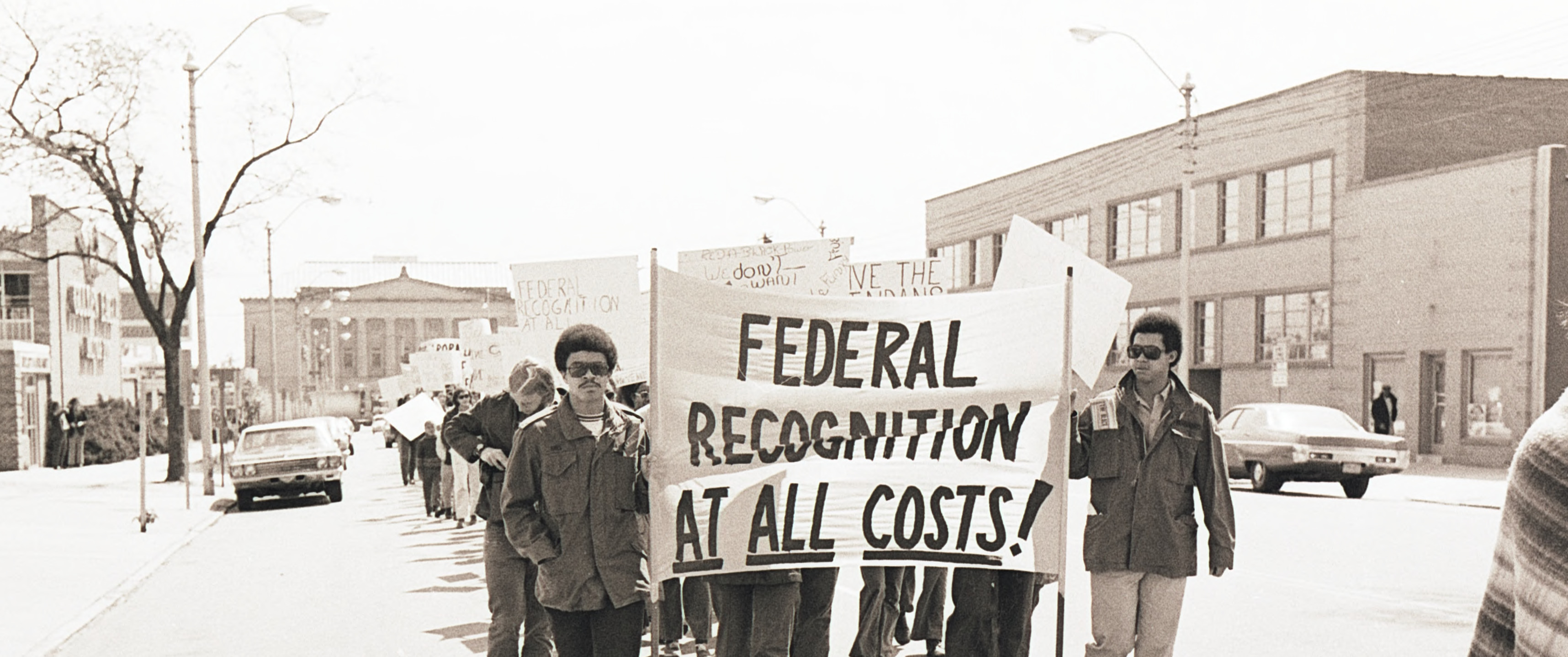
April 12, 1973 - Protest Moved to NC State
On Thursday, April 12, 1973, the protestors rested near NC State’s campus for the night before continuing the march. Over 50 protesters stayed at the NC State University Baptist Student Union building on Hillsborough Street after leaving Shaw University on the march’s route (Raleigh News and Observer, April 13, 1973). Among the protesters was Golden A. Frinks, an American civil rights activist and a Southern Christian Leadership Conference field secretary. According to this technician article, Golden Frinks, protest leader Chief Brooks, and civil rights activist Hosea Williams met in the Talley Student Center Ballroom to discuss their plans for the protest the following day. Other protestors participating in the march at this time included Chief Leon Locklear and Chief Cecil Hunt of the Tuscarora Nation of North Carolina.
April 13, 1973 - NC State Community Joined Protest
Golden Frinks announced that several Black and white NC State students would be joining the march to the Capitol on April 13, 1973 (Raleigh News and Observer, April 12, 1973). A rally was held at noon on April 13th at the Memorial Belltower on campus in support of the protestors. Several NC State students and local community members participated by handing out leaflets about the protests prior to the rally at the Belltower. Following the rally, over 20 NC State students participated in the march from the Memorial Auditorium to the Capitol (Technician, Vol. 53 No. 77, April 13, 1973).
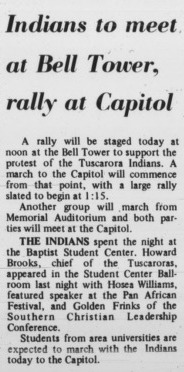
April 14-18, 1973 - The Protest Continued
The protest continued on the following days. By Saturday, April 14th, protestors had camped out on the front lawn of the North Carolina Commission of Indian Affairs (now the North Carolina Division of Indian Affairs) office building a short distance from the Governor’s Mansion on Blount Street. An opinion piece in the Technician on April 16th criticized the protest as a failure and stated, “There are better ways of solving these problems. Positive action, not parading, is needed” (Technician, Vol. 53 No. 78, April 16, 1973).
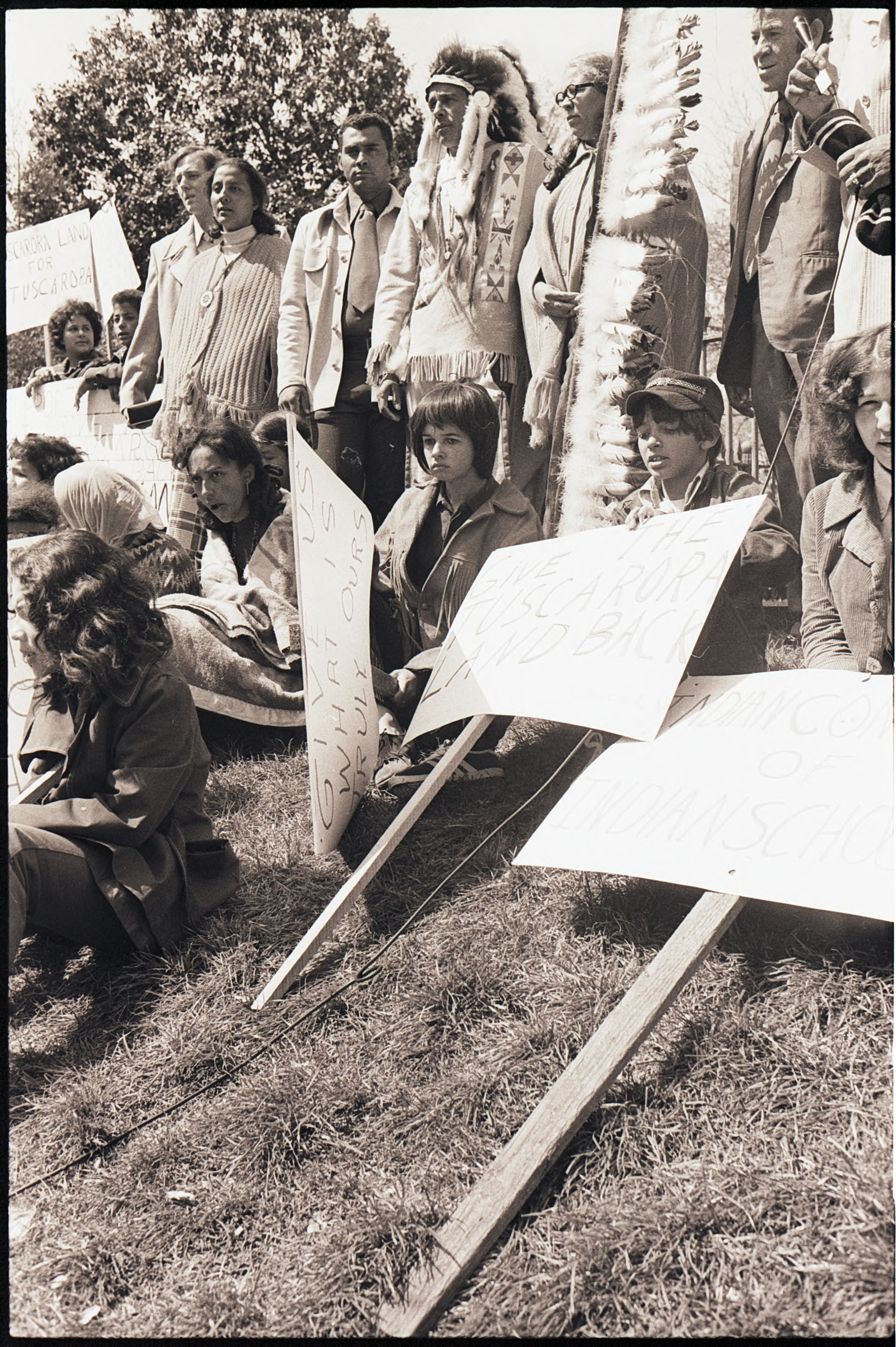
The protest escalated significantly on April 18th, when an NC State student was taken into police custody. A Technician article reported that NC State student Lee Mueller ran a police barricade on the street between the Indian Affairs office and the Governor’s Mansion to join the protestors. After joining the protesters on the lawn of the Indian Affairs office, several state patrol officers arrived and took Mueller into custody for driving past the barricade. Another NC State student, John McKenzie, was present and argued that the police officer almost ran over him and his son while trying to chase after Mueller. Several other Black and Native American protestors were arrested by heavily armed police officers four days after the protestors began camping out on the lawn of the office building (Raleigh News and Observer, April 18, 1973).
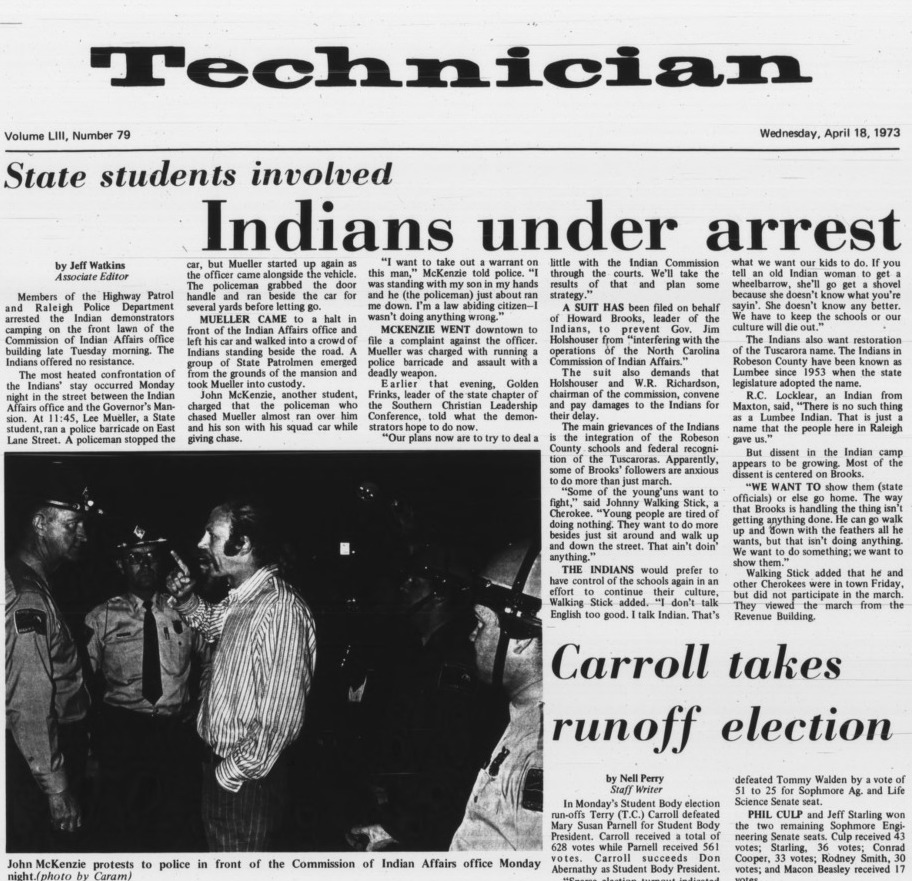
April 20-21, 1973 - The Protest Concluded
On Friday, April 20, 1973, the North Carolina Commission of Indian Affairs agreed to hold a committee meeting and review grievances held by the Tuscarora people. The protest concluded on April 21st after the protest leaders secured a promise that the commission would create a seat for the Tuscarora people on their council to better represent their interests (Raleigh News and Observer, April 22, 1973). For more information about the Tuscarora people and their recent petitions for state and federal recognition, visit the Tuscarora Nation of North Carolina website.
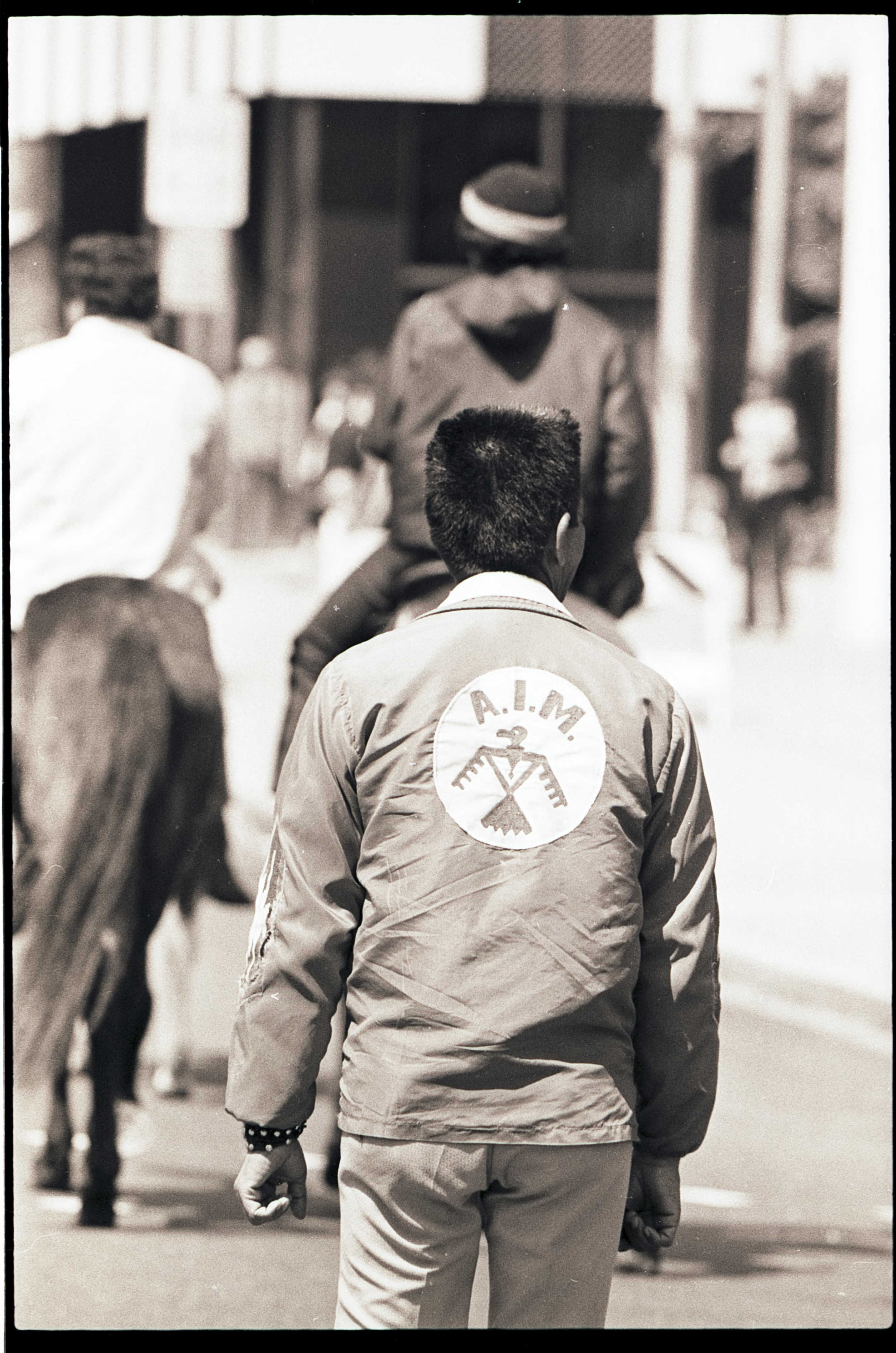
If you have any questions or are interested in viewing Special Collections materials, please contact us at library_specialcollections@ncsu.edu or submit a request online. The Special Collections Research Center is open by appointment only. Appointments are available Monday–Friday, 9am–6pm and Saturday, 1pm–5pm. Requests for a Saturday appointment must be received no later than Tuesday of the same week.